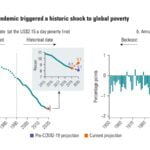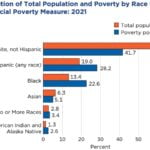Our fascination with microfinance began last century; the love affair in the mid-2000s.
The United Nations declared 2005 as the year of microcredit. Muhammad Yunus and the Grameen Bank won the Nobel Peace Prize the following year.
Little empirical evidence supporting the effectiveness of microfinance was presented to support either of these landmark events.
Subsequently, a series of academic papers – 2011, 2012 and 2015, to name a few – have severely challenged the effectiveness of microfinance as a poverty alleviation tool.
Yunus’ suggestion that we would have to go to museums to see what the blight of poverty was like seems laughable now. Only fanatical supporters still believe microfinance is a miracle cure.
The sector’s reputation has been hammered by a series of negative reports, documentaries, books and academic papers. It is widely accepted to have “lost its fairy dust.”
Yet the sector keeps growing, despite lack of evidence that it is an effective poverty alleviation tool.
How did we fall in love with the idea of indebting poor people as a means of escaping poverty? I propose that this was for mythological and idealistic beliefs that we hold dear in the West.
Aid was falling out of favor – deemed inefficient, ineffective, often corrupt and non-scalable. Development was synonymous with food handouts, and now the development sector was preaching “teach a man to fish.”
Microfinance apparently offered a scalable solution – once the banks had reached break-even, they could grow without endless subsidy, and apparently offer a free lunch to all concerned.
Investors could make a return, and the poor could escape poverty by their own hard work. We were harnessing the proverbial entrepreneurship at the bottom of the pyramid.
In the meantime, entrepreneurship itself had become the buzzword. Our superheroes started up businesses in garages in California and grew into the pioneers of Silicon Valley.
People with MBAs desperately jumped onto the bandwagon, and new technology was the next big thing.
The Internet provided a superb arena for the next generation of entrepreneurs, heralded in the media as the true heroes of Western capitalist thinking.
And microfinance extended this possibility to the poor – they too could be micro-entrepreneurs.
Governments were cash-strapped, international aid was waning, and microfinance seemed to offer a chance to develop countries, but without draining scarce development budgets, which could presumably be used for more useful things such as vaccinations, hospitals and schools.
Then we had the gender angle: microfinance targeted women, the vulnerable but hard-working members of society.
The benefits of microfinance would spill over to their families and kids. Institutions such as Women’s World Bank popped up, and microfinance institutions boasted of their female participation rates.
Then we have the other bundled services: micro-insurance (healthcare), micro-pensions (retirement), micro-savings (financial security). Who could criticize this? Credit, after all, is a human right, apparently.
The fact that microfinance was dominated by micro-debt was ignored. The sector was rebranded as financial inclusion.
This broad belief in debt was highly compatible with Western capitalist beliefs: banks are the backbone of our society; the color of your credit cards reveals your status. Abundant credit meant everyone could have a new house, car, holiday and so on. Investment banks were the ultimate employer.
And microfinance had ambassadors: Queen Rania of Jordan, the Queen of Spain and Princess (now Queen) Maxima of Holland; Oprah Winfrey loved it; Bono thought it was a marvelous idea.
But the supreme representative of the sector was Yunus: a beaming, Western-educated economist from a poor and downtrodden country.
He had a magical charm, was a great public speaker and had the exact profile required to promote microfinance.
The suit-wearing investment bankers could never be the frontmen. They lay in the background doing the Initial Public Offerings (IPOs), discreetly pocketing the fruits of the combined labor of the so-called micro-entrepreneurs.
Where was the evidence to support this fanaticism? In short, there was none.
Evidence was not needed. Of course microfinance works. It touched all the right buttons in our Western psyche. It just felt right. Critics could be dismissed as heretics.
When entire countries collapsed, such as Nicaragua, or during the Andhra Pradesh crisis when women began committing suicide, the sector shrugged this off as a few outliers – the model still stood unchallenged.
Should we be surprised, in 2015, to read well-respected academics concluding, “The [microfinance] studies do not find clear evidence, or even much in the way of suggestive evidence, of reductions in poverty or substantial improvements in living standards. Nor is there robust evidence of improvements in social indicators”?
How can we arrive at such a mediocre conclusion from such a hyped sector? We allowed our Western ideologies, our own love affair with finance and obsession with entrepreneurship, to cloud our judgment.
Common sense took a back seat. Subjective desires of what we wanted to be true overshadowed any objective criteria.
And many benefitted on the back of this mythology. The lucky few earn massive salaries – huge bonuses and proceeds of IPOs can be eye-watering.
It should come as little surprise that these are precisely the same people who maintain this fanatical belief in microfinance – ignoring academic evidence, promoting self-regulation and laughing at the idea of interest rate caps, despite living in countries where interest rate caps are common.
Protection of the poor is apparently unnecessary, as the market mechanisms will ensure this, while client protection in Western countries improves each year. We need more microfinance to drive down interest rates and improve services, supposedly.
The fanatics lick their lips at the prospect of handing out credit cards to the remaining billion or so who do not yet have a bank account. If they can do this via cell phones even better, as the profit margins are higher.
Microfinance works because we want it to. Not because it does.
 Hugh Sinclair is a microfinance consultant, blogger and author. He works with organizations seeking to provide ethical, beneficial microfinance to the poor. In 2012, he wrote “Confessions of a Microfinance Heretic,” highlighting some of the more nefarious activities within the sector. A longer version of this article was originally published on the Month of Microfinance blog. It is used with permission. You can follow him on Twitter @MFHeretic.
Hugh Sinclair is a microfinance consultant, blogger and author. He works with organizations seeking to provide ethical, beneficial microfinance to the poor. In 2012, he wrote “Confessions of a Microfinance Heretic,” highlighting some of the more nefarious activities within the sector. A longer version of this article was originally published on the Month of Microfinance blog. It is used with permission. You can follow him on Twitter @MFHeretic.



